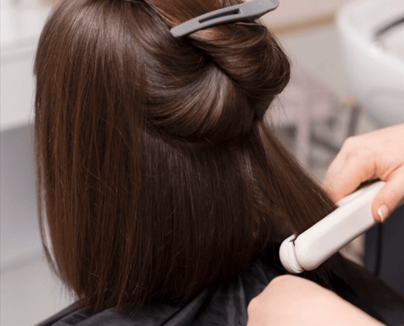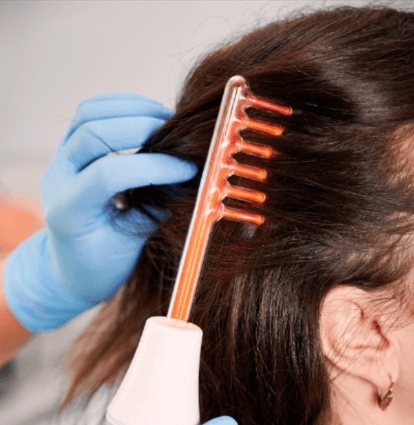Melasma, a common pigmentation disorder characterized by brown or gray-brown patches on the face, requires accurate diagnosis before initiating treatment. In Korea—known for its cutting-edge dermatology—doctors use a combination of clinical evaluation, imaging technologies, and diagnostic tools to tailor treatment plans to each patient’s skin type, condition severity, and pigmentation depth.
If you’re considering melasma treatment in Korea, understanding how Korean dermatologists diagnose melasma will help you make informed choices and set realistic expectations.
🧑⚕️ Why Accurate Diagnosis Matters in Melasma Treatment
Melasma is not a one-size-fits-all condition. Korean dermatologists distinguish melasma from similar-looking disorders such as:
- Post-inflammatory hyperpigmentation (PIH)
- Lichen planus pigmentosus
- Pigmented contact dermatitis
- Solar lentigines (sun spots)
💡 Misdiagnosis can lead to ineffective or even harmful treatments, especially when lasers or topical steroids are involved.
🔍 Step-by-Step: How Korean Dermatologists Diagnose Melasma
✅ 1. Detailed Patient History
The diagnostic process begins with an in-depth consultation. Dermatologists will ask about:
- Onset and progression of pigmentation
- Pregnancy, birth control, or hormonal history
- Family history of pigmentation disorders
- Skincare product use (e.g., exfoliants or bleaching creams)
- Sun exposure habits and sunscreen use
- Prior aesthetic treatments (e.g., peels, IPL, laser)
📝 In Korea, this initial history-taking is often supported by electronic records and standardized skin assessment questionnaires.
✅ 2. Visual and Physical Examination
Korean dermatologists examine:
- Pattern and location of pigmentation (e.g., centrofacial, malar, mandibular)
- Color (light brown, gray, or bluish tones indicating epidermal vs. dermal depth)
- Symmetry (melasma is usually symmetric, unlike some other disorders)
- Skin texture and sensitivity
📌 In Korea, even mild cases are treated seriously to prevent progression, especially among patients with Fitzpatrick skin types III–V, which are more prone to persistent hyperpigmentation.
✅ 3. Woods Lamp Examination (Optional)
This UV light tool helps dermatologists classify melasma based on pigment depth:
| Type | Appearance Under Wood’s Lamp | Treatment Implication |
|---|---|---|
| Epidermal | Enhanced contrast | Responds well to topical treatments and lasers |
| Dermal | No enhancement | More stubborn, requires deeper treatments |
| Mixed | Partially enhanced | Needs combination therapy |
| Indeterminate | Difficult to assess | May need further imaging |
While not used in every clinic, Wood’s lamp is a fast, affordable option in some Korean practices.
✅ 4. Digital Skin Imaging and Analysis
Korean dermatology clinics commonly use high-resolution diagnostic imaging for melasma evaluation:
🔬 VISIA Skin Analysis
- Visualizes pigmentation beneath the surface
- Provides UV damage assessment
- Tracks melasma progression over time
- Allows 3D facial mapping to guide targeted treatment
🔬 OBSERV 520 or OBSERV 320
- Offers multiple lighting modes: cross-polarized, UV fluorescence, etc.
- Differentiates between melanin, inflammation, and vascular pigmentation
- Helpful in distinguishing melasma from PIH or other dermatoses
Other Devices:
- Antera 3D: Measures melanin concentration and skin vascularity
- Clara or Dermascope: Dermatologists may use handheld magnifiers to examine texture changes and pore health
📊 These tools generate quantitative data (melanin index, pigmentation score), which help doctors monitor treatment response and make data-driven adjustments.
✅ 5. Skin Biopsy (Rare Cases)
If there’s diagnostic uncertainty—such as distinguishing melasma from conditions like lichen planus pigmentosus or pigmented basal cell carcinoma—a punch biopsy may be performed. However, this is rare in routine cosmetic melasma care and typically reserved for medical referrals.
✅ 6. Hormonal and Blood Testing (Selective)
In cases where melasma appears resistant or hormonally driven, Korean dermatologists may coordinate tests with internal medicine or gynecology specialists:
- Estradiol, progesterone, testosterone
- Thyroid function (TSH, T3, T4)
- PCOS screening (LH/FSH ratio)
- Iron levels or vitamin B12 (if anemia or nutritional factors suspected)
🤝 Multidisciplinary care is common in Korean medical centers and hospitals, where dermatologists collaborate with OBGYN or endocrinology for systemic melasma triggers.
📌 Real-World Example: Korean Diagnostic Protocol for a Melasma Patient
Patient: 38-year-old female, Fitzpatrick Type IV, complaints of worsening pigmentation after childbirth
Clinic: Gangnam-based aesthetic dermatology center
Diagnostic Steps:
- Patient history: postpartum melasma, 2nd pregnancy, breastfeeding
- VISIA scan: mixed-type pigmentation, deeper malar involvement
- OBSERV: no vascular component, some residual post-acne PIH
- Wood’s lamp: partial enhancement (suggesting mixed melasma)
- Hormonal panel: slightly elevated progesterone
- Final diagnosis: hormonally influenced mixed melasma
Treatment Plan:
- Tranexamic acid cream
- Niacinamide serum
- Low-fluence Q-switched laser
- Hormonal stabilization monitored by OBGYN
🏥 Korean Clinics Known for Advanced Melasma Diagnosis
| Clinic | Location | Diagnostic Tools |
|---|---|---|
| Banobagi Dermatology | Seoul | VISIA, Wood’s Lamp, Antera 3D |
| Oracle Dermatology | Nationwide | OBSERV 520, VISIA, melanin index |
| ME Clinic | Gangnam | VISIA + hormone panel coordination |
| Renewme Skin Clinic | Seoul, Busan | Digital facial scan + PIH differentiation |
| The Plus Dermatology | Apgujeong | Skin biopsy & systemic workup options |
🧠 Final Takeaways: What You Should Know
- Melasma diagnosis in Korea is technology-driven, using tools like VISIA and OBSERV to classify melasma type and depth.
- Dermatologists integrate visual assessment with internal medical factors to understand root causes.
- Precise diagnosis guides safe and effective treatment selection—from topical to laser to hormonal coordination.
- Discussing past treatments, medications, and lifestyle factors with your Korean dermatologist helps avoid misdiagnosis.
✈️ For Medical Tourists:
If you’re visiting Korea for melasma treatment:
- Bring a list of past medications and skincare products
- Share your sun habits and hormonal history
- Ask clinics if they offer VISIA or OBSERV scans as part of the consultation




